|
|
 |
|
May 23, 2012
July 4th may seem a long way off, but it’s never too early to start acquiring a bottle of Madeira if you want to drink a proper toast to the holiday.
“Madeira?” you may wonder. “For celebrating American independence?”
Yes, actually, and here’s why. Madeira, which is produced on the Portuguese Islands of Madeira, was an extremely important wine in the early history of America. Since the European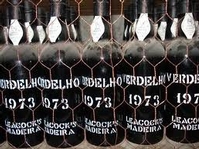 settlers could not grow vinifera grapes in their new homeland because of phylloxera (the deadly vine scourge which was not identified until the mid 19th century) all wines had to be imported. Although American colonists were relatively few in number, they consumed as much as a quarter of the total volume of Madeira produced. Madeira s success as an import was due partly to the fact that, thanks to being a fortified wine, it was protected against the extreme heat and constant rolling movement of the ships required to transport it to North America. And not only did it survive, the wine seemed to actually be enhanced by these challenging conditions. settlers could not grow vinifera grapes in their new homeland because of phylloxera (the deadly vine scourge which was not identified until the mid 19th century) all wines had to be imported. Although American colonists were relatively few in number, they consumed as much as a quarter of the total volume of Madeira produced. Madeira s success as an import was due partly to the fact that, thanks to being a fortified wine, it was protected against the extreme heat and constant rolling movement of the ships required to transport it to North America. And not only did it survive, the wine seemed to actually be enhanced by these challenging conditions.
Madeira played a starring role in a particularly dramatic event leading up to the American Revolution when, on May 9, 1768, John Hancock’s sloop “Liberty” sailed into Boston Harbor. As soon as its cargo of Madeira wine was unloaded, the ship was promptly seized and held by a British boat for failure to pay import duties on the wine. (As a curious postscript to this historic drama, the British vessel that captured Liberty was named Romney. During the hubbub surrounding the ship’s capture, riots erupted around Boston during which the Romney’s sailors were attacked by an angry Boston mob. We can perhaps view this kerfuffle as the Boston Madeira Party--a precursor to the legendary Boston Tea Party that occurred a few years later.)
A favorite tipple of America’s first fathers, Madeira was one of George Washington’s preferred beverages. It was much loved by Alexander Hamilton, Ben Franklin and John Adams, and 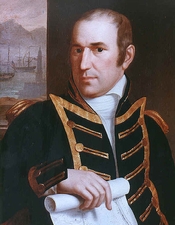 was stockpiled by Thomas Jefferson. A bottle of Madeira was used to christen the USS Constitution (a.k.a. Old Ironsides) in 1797. In 1803, when the distinguished naval officer Commodore Edward Preble sailed the Constitution toward Tripoli at the outset of the First Barbary War, he laid in 20 bottles of fine Madeira, plus a half pipe and six demijohns of ordinary Madeira (a pipe is a barrel containing almost 600 bottles of wine, a demijohn typically holds from one to 5 gallons). In addition Preble asked for 10 bottles of old Port, 4 cases of Claret, 2 barrels of “strong” beer, 6 hogsheads (63 gallons) of porter, 8 gallons of Cognac, 2 cases of gin, a case of cherry brandy, and 10 dozen bottle of cider, plus assorted other liquors. Bon voyage indeed! was stockpiled by Thomas Jefferson. A bottle of Madeira was used to christen the USS Constitution (a.k.a. Old Ironsides) in 1797. In 1803, when the distinguished naval officer Commodore Edward Preble sailed the Constitution toward Tripoli at the outset of the First Barbary War, he laid in 20 bottles of fine Madeira, plus a half pipe and six demijohns of ordinary Madeira (a pipe is a barrel containing almost 600 bottles of wine, a demijohn typically holds from one to 5 gallons). In addition Preble asked for 10 bottles of old Port, 4 cases of Claret, 2 barrels of “strong” beer, 6 hogsheads (63 gallons) of porter, 8 gallons of Cognac, 2 cases of gin, a case of cherry brandy, and 10 dozen bottle of cider, plus assorted other liquors. Bon voyage indeed!
I hope I’ve convinced you of the patriotic necessity of saluting Independence Day with a glass of true Madeira (not to be confused with imitators from California or any other non-Portuguese locale). And if you want to throw a little gin or cherry brandy into the festivities as well, then all I can say is…watch out for the fireworks.
Posted by Marguerite Thomas at 12:01 PM
|
|
May 16, 2012
I met Gary Farrell for the first time more than 20 years ago. He was a modest
man making very good wine under difficult conditions in California's Russian
River Valley.
The difficult conditions were self-imposed, for Farrell specialized in pinot
noir. California pinot noir, at that time, was anything but a ringing
endorsement for the potential of California viticulture. The pinots of that era
were either colorless, thin and acidic or ponderous and boring.
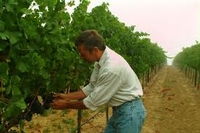 The elegant pinots
Farrell made for Davus Bynum and his own small label were the exception, not the
rule. Few winemakers from that time had the first clue about pinot noir. They
didn't know where to grow it and certainly didn't know how to make it. The elegant pinots
Farrell made for Davus Bynum and his own small label were the exception, not the
rule. Few winemakers from that time had the first clue about pinot noir. They
didn't know where to grow it and certainly didn't know how to make it.
In my earliest discussions with him about California pinot noir, Farrell laid
much of the blame at the feet of University of California, Davis, the
pre-eminent university in the nation for aspiring winemakers. Farrell stumbled,
just as everyone else had, with his first attempts at producing world-class
pinot noir that would rival the great red wines of France's Burgundy region.
He eventually blazed his own path, and the Gary Farrell winery eventually
became a source for some of California's finest pinots. Farrell sold his
"namesake" winery in 2004, and in 2007 hooked up with neighbor and colleague
Bill Hambrecht to launch Alysian Wines.
Alysian is a Russian River Valley winery dedicated to small batches of high
quality pinot noir and chardonnay. I hadn't spoken to Farrell in years when a
sample pack of five Alysian pinots arrived at my office recently, to be followed
by a brief email.
I was intrigued first because of Farrell's involvement, and later when I
perused the technical information that accompanied the wines. Two of them were
below 14 percent alcohol by volume, and the other three were nominally above the
14 percent mark.
Could it be that Farrell was up to his old tricks, making elegant pinot noir
that wouldn't clobber you over the head with alcohol and massive fruit? The
major difference between New World pinot noir today and the finest red
Burgundies is structure.
New World pinots tend to be soft and voluptuous, and sweet to a certain
extent. They taste good and have forged an impressive following, but they barely
resemble the wines of Burgundy that inspired winemakers such as Farrell in the
first place.
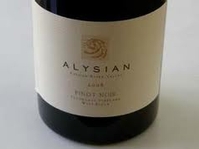 The
Alysian pinots are that rarity in New World pinot, exhibiting the firm structure
and weightlessness on the palate that are the hallmarks of great red Burgundy.
This is accomplished without sacrificing aromatics, fruit concentration or
flavor. The bright acidity and firm tannins are the bones, and superb Russian
River Valley pinot noir grapes ensure there is plenty of flesh on those
bones. The
Alysian pinots are that rarity in New World pinot, exhibiting the firm structure
and weightlessness on the palate that are the hallmarks of great red Burgundy.
This is accomplished without sacrificing aromatics, fruit concentration or
flavor. The bright acidity and firm tannins are the bones, and superb Russian
River Valley pinot noir grapes ensure there is plenty of flesh on those
bones.
The landscape for California pinot noir has changed radically over the past
20 years. There are numerous other RRV producers doing stellar work with pinot,
but as a group I do believe the five Alysian pinots sampled recently are the
finest I've ever tasted.
I used to think of Gary Farrell as the king of California pinot noir. I still
do
(See reviews of Alysian Pinot Noir on Reviews Page.)
Posted by Robert Whitley at 10:41 AM
|
|
May 12, 2012
Okay, it wasn’t exactly an odyssey since I didn’t travel more than a handful of miles from my own front door, but it certainly was an epic journey for my palate. The occasion was a Greek wine dinner at the Olive Room, a new boutique inn and restaurant recently opened by the Spiliadis family, who are well known to Baltimoreans for their Black Olive Restaurant located just around the corner from this new venture. Although the rooftop restaurant does not 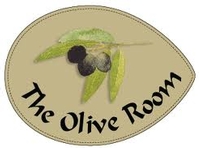 overlook the azure Mediterranean, the panoramic vista of Baltimore’s skyline and harbor is pretty nice too, especially on evening such as this when the setting sun streaks the sky with swirls of gold and pink. overlook the azure Mediterranean, the panoramic vista of Baltimore’s skyline and harbor is pretty nice too, especially on evening such as this when the setting sun streaks the sky with swirls of gold and pink.
The edible expedition began with oysters, half of the briny bivalves topped with cucumber mignonette, the others baked à la Rockefeller. The bivalves were followed by seared scallops on a delicious slick of puréed parsnip and lemon. Among other notable dishes were mushroom polenta and savory bread pudding. And since this was Greek cuisine no one was surprised by the appearance of a treasure-trove of lamb dishes, including lamb ragout, roasted lamb meatballs, and oregano scented lamb chops. But what really gave this meal its sense of gustatory poetics were the wines. Three different estates were represented.
Domaine Gerovassiliou is surrounded by sea on three sides, while its western side faces Mount Olympus. It is an extraordinarily inviting landscape, both for humans and vines.  Indigenous Greek grapes as well as well as familiar foreign varieties thrive here. Gerovassiliou Malagousia is a beautiful white wine made from a rare Greek grape that was on the verge of extinction before Evangelos Gerovassiliou recognized its potential. With floral aromatic notes and hints of lemon, pear and citrus, plus refreshing acidity and a long finish, this Malagousia is uniquely endowed with both heft and grace. Gerovassiliou Avaton, a blend of three Greeek reds (Limnio, Mavrotragano and Mavroudi), is dry and balanced, with dark berry flavors, spice, and a hint of cedar. The estate’s top of the line Evangelo (Syrah, with 8% Viognier) exhibits a rich, mellow character spiked by hints of black pepper and dark chocolate. Indigenous Greek grapes as well as well as familiar foreign varieties thrive here. Gerovassiliou Malagousia is a beautiful white wine made from a rare Greek grape that was on the verge of extinction before Evangelos Gerovassiliou recognized its potential. With floral aromatic notes and hints of lemon, pear and citrus, plus refreshing acidity and a long finish, this Malagousia is uniquely endowed with both heft and grace. Gerovassiliou Avaton, a blend of three Greeek reds (Limnio, Mavrotragano and Mavroudi), is dry and balanced, with dark berry flavors, spice, and a hint of cedar. The estate’s top of the line Evangelo (Syrah, with 8% Viognier) exhibits a rich, mellow character spiked by hints of black pepper and dark chocolate.
Domaine Katsaros is a small, family run estate nestled on the slopes of Mount Olympus almost 2500 feet above sea level. The organically raised grapes produce wines of depth and complexity, including the mellifluous Katsaros Chardonnay that is fresh and silky, with a medium body tweaked by acidity. Katsaros Rouge, a blend of Cabernet and Merlot has seductive aromatics, spice and fruit all nicely integrated with oak. This wine’s pronounced tannins melt on the palate when they meet up with something rich and fatty such as lamb chops.
Biblia Chora is set high up on the slopes of Mount Pangeon, in Macedonia. The succulent Biblia Chora Areti White, made from indigenous Assyrtiko, is fresh and fruity, with lemon drop  and delicate floral notes. Biblia Chora Ovilos White, a blend of Assyrtiko with 50% Semillon, is a richly textured, complex elixir that suggests apricots, preserved lemon, honey and nuts. Biblia Chora Areti Red, a full bodied wine made from 100% Agiorgitiko, offers aromas reminiscent of sherry and cocoa, with enticing cherry, spice and cedar flavors. and delicate floral notes. Biblia Chora Ovilos White, a blend of Assyrtiko with 50% Semillon, is a richly textured, complex elixir that suggests apricots, preserved lemon, honey and nuts. Biblia Chora Areti Red, a full bodied wine made from 100% Agiorgitiko, offers aromas reminiscent of sherry and cocoa, with enticing cherry, spice and cedar flavors.
It took me ten minutes rather than Odysseus’ ten years, to get back home, and unlike that intrepid traveler I did not venture into the underworld. But I did feel that I’d encountered at least one Greek god that night: Dionysius, in my wine-filled glass….
Posted by Marguerite Thomas at 1:28 PM
|
|
 |
|